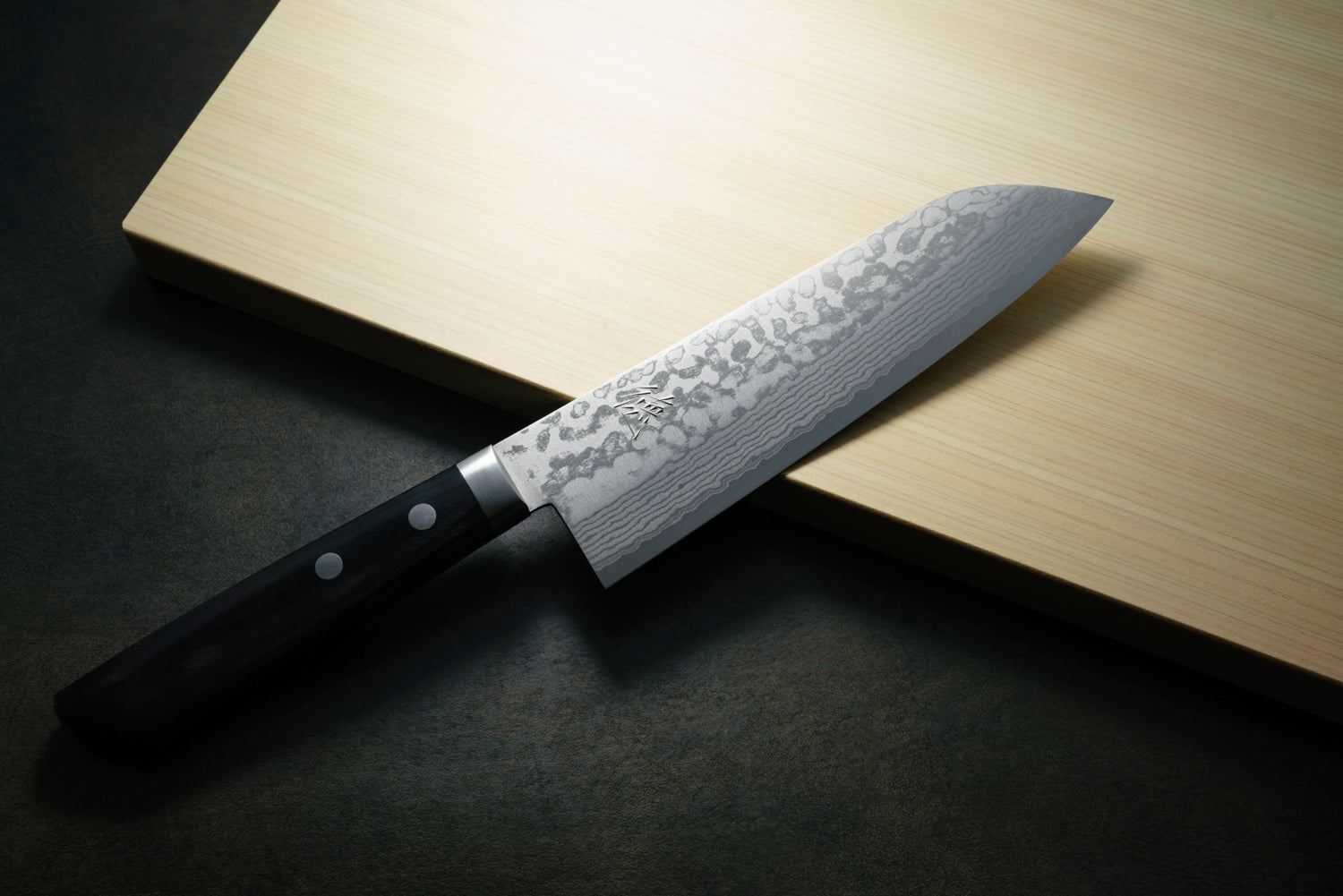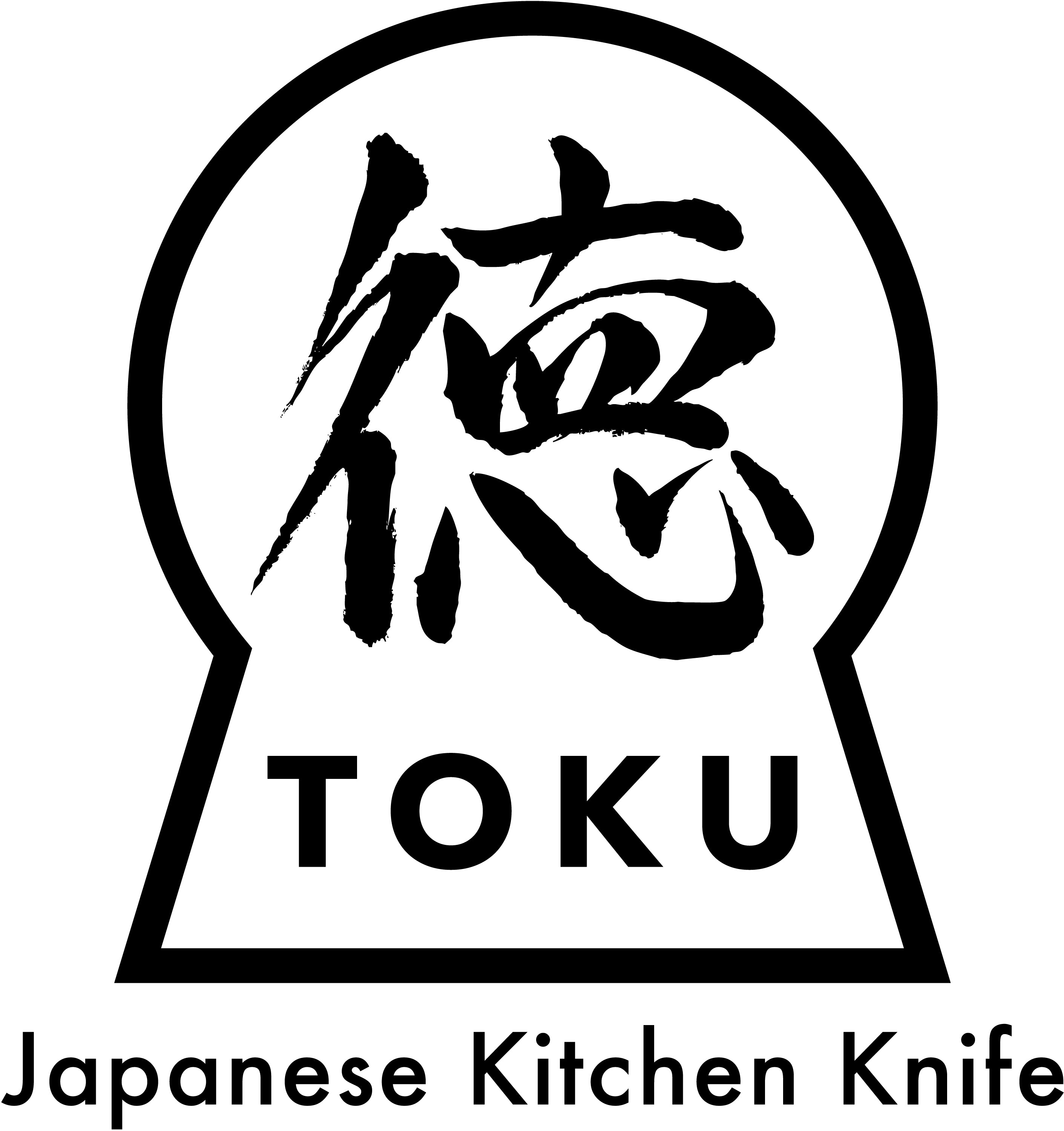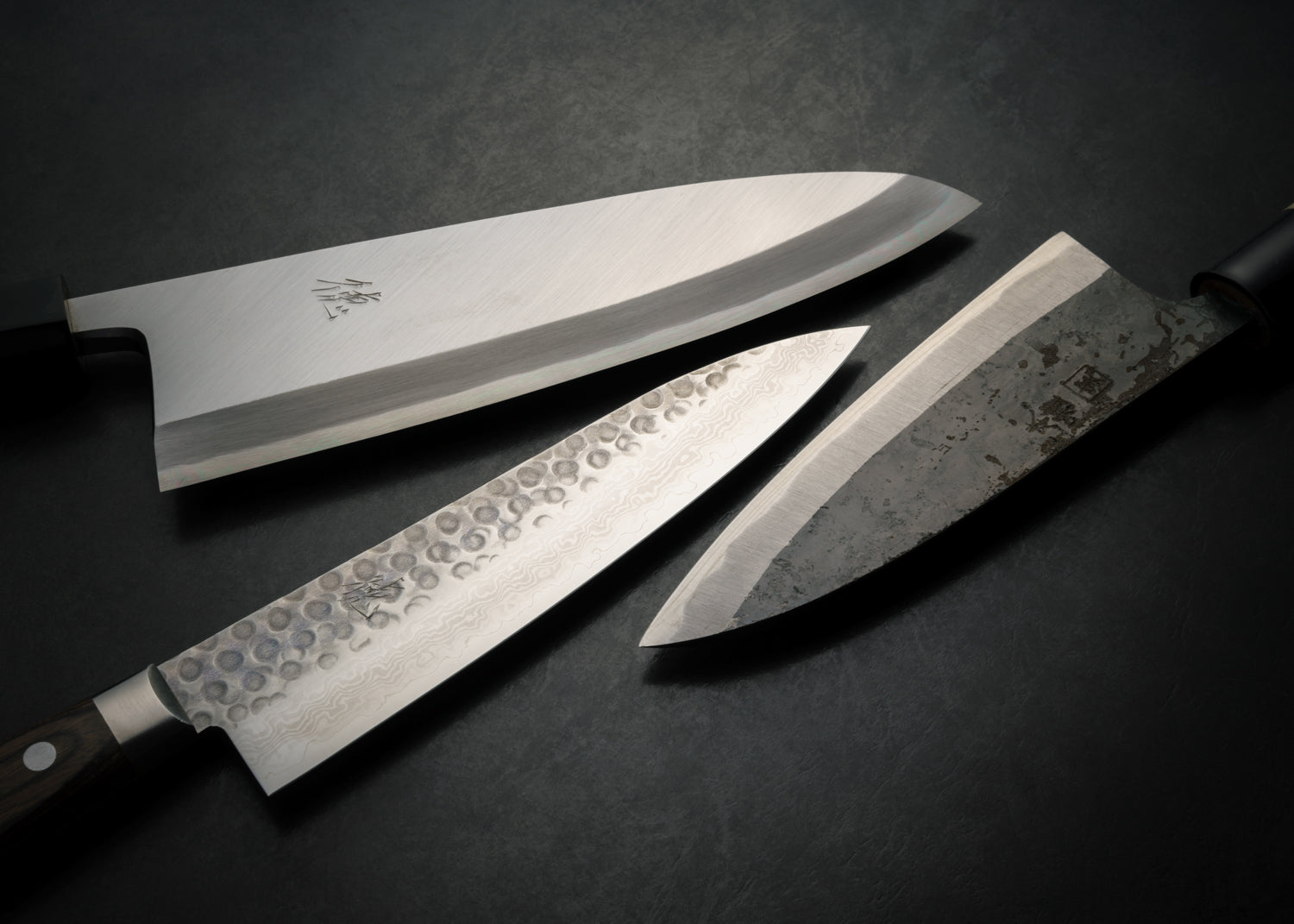
[2024] Santoku knife
I am Okudaira, the owner of "Japanese Kitchen Knife TOKU''.
We want to sell knives made in our hometown of Sakai, Osaka, so we purchase and sell knives made in Sakai from a knife manufacturer in Sakai.
We don't just sell knives, we visit a number of blacksmiths and bladesmiths in Sakai to help our customers understand knives, experience the actual work, and hear from the craftsmen. I'm here. In addition to Sakai, we also visit Seki in Gifu, Tsubame-Sanjo in Niigata, Tanegashima in Kagoshima and Katsushika in Tokyo, in an effort to deepen our understanding of the characteristics and commitment of each.
Santoku knife
The most commonly used knife in the home is the Santoku knife.
Santoku knives are the type of knife you often see in the knife sections of supermarkets and home improvement stores.
Recently, when I talk to people who request sharpening, I realize that some people don't know much about the knives they use. They buy knives sold at supermarkets or home improvement stores because they think they look good or they cut well.
Some people want to buy a knife but don't know which one to buy.
The first knife I would recommend to such people is this Santoku knife.
Santoku refers to meat, fish, and vegetables, and is a knife that was created in Japan as an all-purpose knife for cutting meat, fish, and vegetables.
There are single-edged and double-edged knives, and the Santoku knife is a double-edged knife.
A double-edged knife is a knife that can be used by both right-handed and left-handed people and is suitable for either hand.
The knives that have been used in Japan since ancient times are called Japanese knives, and are made with a single blade, such as the Deba knife and Yanagiba knife. Since fish was the central food culture in Japan, there are many knives for cutting fish.
Examples include knives suited to different types of fish, such as puffer fish cutters, conger eel bone cutters, and eel splitters.
Then, after the Meiji period, meat was introduced, which brought about changes in food culture.
At the same time, Western knives such as chef's knives, sujihiki knives, and petty knives are also included.
From this, the need for a knife that could handle meat, fish, and vegetables came about, and the Santoku knife was born.
A Santoku knife is a combination of three knives: a chef's knife, a funayuki knife, and a nakiri knife.
This knife is a combination of the Western-style chef's knife, which is suitable for cutting meat, the boat knife, which fishermen use to fillet fish on their boats, and the nakiri, which is suitable for cutting vegetables, all of which have been made to take advantage of the characteristics of each knife.
Most Santoku knives have a blade length of around 150mm to 180mm .
Personally, I think the mid-range 165mm would be a good choice if you were buying your first lens.
Many Santoku knives are available in stainless steel.
If you want to buy something reasonably priced, you can go for steels such as AUS or molybdenum, but if you want something a little nicer, VG10 is a good choice.
There are many beautiful looking Damascus knives on the market for VG10 . If you feel more motivated to cook with a beautiful looking knife, then you should consider purchasing a Damascus knife.
If you are looking for sharpness, there are also steel Santoku knives available, so it might be worth looking into them.
Sakaitoku Knife Shop also carries Santoku knives, so please come take a look.
https://japanknifetoku.com/collections/santoku-knife
Let's go to a knife store!
If you don't understand it until you see it, go to a knife store and try holding a knife. However, most stores do not allow you to try cutting the knife, so you cannot check the sharpness before purchasing.
"Japanese Kitchen Knife TOKU'' does not have a store, but we set up stalls at events, so please feel free to stop by if we have one in your area.If there is no knife specialty store nearby, it is a good idea to purchase from an online knife specialty store.
"Japanese Kitchen Knife TOKU'' has posted a video showing the actual cutting process, so please use it as reference.



1 comment
Great post! The knife safety tips for beginners are very useful and explained in a simple way. Such guidelines are really needed to ensure kitchen safety. Thanks for sharing important information!
kitchnknife
Leave a comment
This site is protected by hCaptcha and the hCaptcha Privacy Policy and Terms of Service apply.